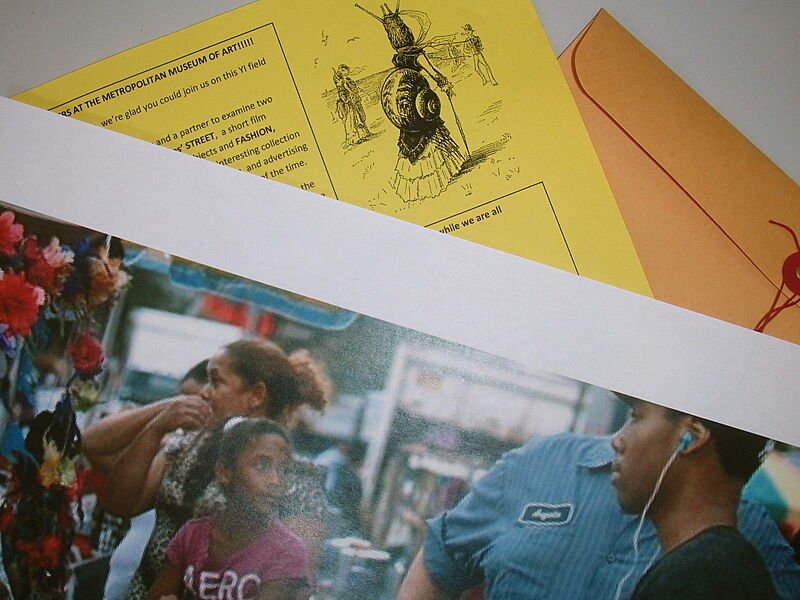Street/Style: YI Writers Visit the Metropolitan Museum of Art
Mar 12, 2013
On March 11, the YI Writers visited the Metropolitan Museum of Art to see two exhibitions that explored the interface between art and culture. STREET (2011) is a film by James Nares with an accompanying show curated by the filmmaker. Impressionism, Fashion, and Modernity contained an extensive display of Impressionist artwork capturing nineteenth-century Parisian upper-class culture.
STREET is James Nares' visual exploration of New York City, a vivid, slow-motion study of anonymity and familiarity. The film is a continuous sequence of street footage, edited so that every motion became a dreamlike, drawn-out experience. A man flicks away a cigarette and we watch as it tumbles, lazily, into space; a little girl runs down the street and her hair fans out behind her, filling with air for what seems like eternity; a woman's expression changes in an instant and we see it as some sluggish realization. The images seemed neither still nor moving, and the effect was that we, the audience, felt a great deal of intimacy with the people in the film. The slow-motion made it possible to digest the faces and movements of those strangers with more time than we are usually given when we walk purposefully down a city street. It also allowed us to engage in a certain amount of detective work. Everything we saw of the strangers on the streets was a clue, and thus their clothing in particular became an integral part of the experience of watching the film. It was a way of gaining insight into an individual’s personality, their taste, and their cultural connections.
Nearby was a gallery of art that spanned the ages. The works, which ranged from sculpture to photographs, aimed to capture the sense of movement and life in urban places that the movie expressed so clearly, and the exhibition expanded on and summarized the themes expressed in STREET. To me, the most striking component of the show was a series of photographic prints which attempted to reproduce motion in a static medium. These included photographic sequence of a bird in flight that resembled stop-action frames and a similar piece that portrayed a human form in motion. These works resonated with me especially as a graceful way of alleviating the constraints of technology when creating art.
Impressionism, Fashion, and Modernity was a compelling combination of Impressionist artwork and the late nineteenth-century Parisian clothing that figures prominently in these works. An underlying concept of the exhibition was the idea of the “modern woman” and how she was defined during that era. A modern lifestyle and prominent social standing often manifest themselves visually in any era, and the exhibition emphasized the purpose of fashion as a vehicle of social communication, with the capacity to convey a woman's social class and her attention to the fashions of the moment. The dresses, corsets, and hats were an effective means of conveying this purpose, providing a three-dimensional representation of the modern woman. Among the artists featured were Gustave Corbet, Édouard Manet, and James Tissot. To drive home the thematic elements of the exhibition, notable quotations were displayed with the art, which stressed the avenues of self-expression that women in particular might find in fashion. It was overall a beautiful and aesthetically logical show, celebrating femininity and the rise of fashion as an art form.
By Isabel, Youth Insights Writer

